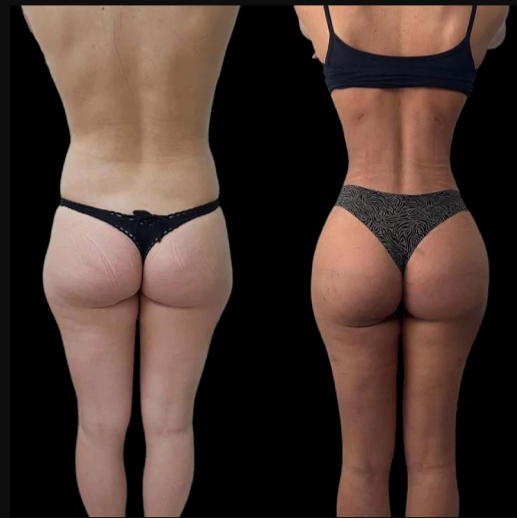Introduction
Giving up smoking is notoriously difficult. Nicotine dependence affects both brain chemistry and behavior. That’s where Champix 1mg, the brand name for varenicline, steps in. Approved in many countries, it’s widely regarded as one of the most effective prescription aids for quitting smoking. In this guide, we’ll explore clinical evidence, real-world data, safety, and comparisons to other cessation methods.
1. Clinical Success Rates: What the Trials Show
Landmark Randomized Trials
A landmark study showed that more than 54% of smokers with cardiovascular disease, treated for 12 weeks, were abstinent, versus only 18.1% receiving placebo—more than threefold increased quitting rate.
In previous trials, 44% stopped smoking after 12 weeks on varenicline, compared to 30% on bupropion and 18% on placebo.
Gradual Reduction Studies
Another randomized study found that varenicline patients were more likely to cut cigarette intake by ≥50% by week 4 and abstain by week 12, compared with placebo.
Combination Therapy with Nicotine Replacement
Pairing varenicline with nicotine patches yielded even greater results: 55.4% quit at 12 weeks compared with 40.9% on varenicline alone, and 49% quit at 24 weeks compared with 32.6%.
2. Real-World Effectiveness
Population Cohort Insights
A nationwide Taiwan cohort study with more than a thousand smokers found that varenicline users demonstrated significantly higher 6-month quit rates (≈16%) compared with nicotine patch or bupropion users, particularly among women and light–moderate dependence smokers
A substantial UK-based primary-care study validated that patients who received varenicline were more likely to quit not only at 6 months, but also through to two years afterwards—having virtually 5 fewer smokers per 100 than patch users at 2-year follow-up
3. Meta‑Analysis & Systematic Reviews
Systematic reviews routinely cite varenicline as the most effective one pharmacotherapy for quitting smoking—approaching triple the rate of placebo and performing better than both bupropion and nicotine replacement therapy
Estimate that varenicline improves chances of quitting by 50–70% compared to NRT or bupropion
4. Long-Term Efficacy: Beyond 12 Weeks
Extension Studies
Prolonged treatment for more than 12 weeks further increases long-term abstinence. During a continuation phase, long-term smokers had abstinence of 70.5% at week 24 with varenicline versus 49.6% with placebo; even after 52 weeks, benefits of the treatment lasted (46.4% vs. 36.9%)
Relapse Prevention Benefits
Prolonged treatment lowers relapse: in a cardiovascular cohort study, varenicline had greater quit rates at 1 year, and there were no concerns regarding safety
5. Comparative Performance: Varenicline vs. Nicotine Patch
Direct Comparison Trials
In a 12-week multicenter randomized trial, varenicline performed better than nicotine patches—greater continuous abstinence at end of treatment—but differences had lessened by 52 weeks
Head‑to‑Head in Clinical Practice
Observational data from Taiwan also verified varenicline users had greater 3- and 6-month quit rates than NRT patch users: 47.1% vs. 30.6% at 3 months, and 41.3% vs. 30.6% at 6 months
Cohort Study Outcomes
A large UK cohort identified varenicline with higher long-term cessation rates than NRT, irrespective of gender and level of dependence
6. Safety & Side Effect Profile
Common Side Effects
Common side effects are nausea (up to 30%), vivid dreams, insomnia, headache, constipation—typically mild, dose-related, and tend to resolve over time
Both RCTs and real-world studies have comparable serious side effect rates for varenicline compared to placebo or NRT.
Misconceptions vs. Evidence
Earlier fears of psychiatric and cardiovascular hazards have largely been allayed. Mega trials and meta-analyses reveal no greater incidence of heart attack, stroke, depression, or suicidal thinking compared to other treatments or placebo
7. Who Benefits Most from Champix 1mg?
Ideal Candidates
- Daily smokers with moderate to high nicotine dependence
- Individuals with failed prior quit attempts using other aids
- Users motivated to quit with clarity on timelines and medical support
Subgroups with Notable Gains
- Women and light/moderate dependence smokers achieved higher cessation rates in observational cohorts.
- Patients with stable cardiovascular disease benefited robustly in dedicated trials.
8. Real User Voices
On quitting forums, many users share real-life experiences:
“By the end of week 3, I wasn’t getting the same reaction to smoking, so I might as well just stop… It worked great for me.”
— r/quittingsmoking
“Smoked 30 years; varenicline for 10 weeks—haven’t smoked since; now cigarettes make me feel sick.”
These testimonials echo the drug’s potency—especially among long-time smokers.
9. Maximizing Effectiveness: Tips & Best Practices
Use Behavioral Support
Clinical guidelines stress the use of varenicline in combination with behavioral interventions—counseling, quitlines, support groups significantly enhances quit rates
Consider Combination Therapy
For certain smokers, the combination of varenicline and NRT patches produces greater abstinence rates (≈55% at 12 weeks) than using varenicline alone
Stick to Full Treatment Plan
Completing the full 12-week course—and in high-risk patients, up to 24 weeks—provides the best relapse prevention results
10. Summary of Effectiveness at a Glance
| Metric | Varenicline (Champix) | Placebo/NRT/Bupropion |
|---|---|---|
| 12‑week quit rate | ~44–54% | ~18–30% |
| 24‑week quit rate | ~49–70% (when extended) | ~30–50% |
| 6‑month real-world quit rate | ~16% | ~10–11% |
| Long-term (2 years) quit likelihood | Higher vs. NRT | Lower |
| Safety risks | Mild, manageable | Mild/moderate |
| Psychiatric/CVD risk | No increased risk confirmed | Comparable |
Conclusion
Champix 1 mg (varenicline) is one of the best smoking-cessation drugs on the market—significantly more effective than placebo, bupropion, and frequently nicotine patches. Real-world evidence and clinical trials confirm its effectiveness at 3, 6, and even 24 months. Although mild adverse effects are prevalent, significant hazards are infrequent, and treatment is well tolerated even among patients with cardiovascular disease.
If you’re serious about quitting and want a medically backed route with high success odds, combining Champix with coaching or behavioral support is a proven strategy. Speak with your doctor to see if it’s the right fit for you.




